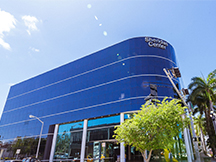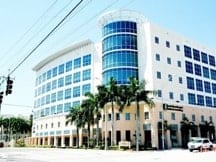Osteochondral Repair of Talus
Book Your Free Consultation
What is osteochondral repair of talus?
The ankle joint is composed of the bottom of the tibia bone (shin) and the top of the talus bone (ankle). The top of the talus is dome-shaped and is completely covered with cartilage. A talar dome lesion is an injury to the cartilage and underlying bone of the talus within the ankle joint. This is referred to as an osteochondral defect (OCD) or osteochondral lesion of the talus (OLT). “Osteo” means bone and “chondral” refers to cartilage.
Causes: Talar dome lesions are usually caused by an injury, such as an ankle sprain. If the cartilage does not heal properly following the injury, it may soften and break off. Usually, a broken piece of the damaged cartilage/bone will float inside the ankle.
Sign & Symptoms: Unless the injury is extensive, it can take up to months, a year, or even longer for symptoms to develop. The signs and symptoms of a talar dome lesion may include:
- Chronic pain deep in the ankle
- Occasional clicking feeling in the ankle when walking
- Sensations of the ankle locking or giving out
- Episodes of swelling of the ankle when bearing weight and subsiding when at rest.
Diagnosis and Treatment: A talar dome lesion can be difficult to diagnose because the precise site of the pain can be hard to pinpoint. To diagnose this injury, podiatrists should question the patient about recent or previous injuries and will examine the foot and ankle. It helps to move the ankle joint to help determine if there is pain, clicking or limited motion within that joint. Sometimes, your surgeon will inject the joint with an anesthetic to measure if the pain goes away for a while, indicating that the pain is coming from inside the joint. X-rays are taken, and often an MRI or other advanced imaging tests are ordered to further evaluate the lesion and extent of the injury.
Treatment depends on the severity of the talar dome lesion. If the lesion is stable (without loose pieces of cartilage or bone), one or more of the following nonsurgical treatment options may be considered:
- Immobilization: Depending on the type of injury, the leg may be placed in a cast or cast boot to protect the talus. During this period of immobilization, non-weightbearing range-of-motion exercises may be recommended.
- Oral medications: Nonsteroidal anti-inflammatory drugs (NSAIDs), such as ibuprofen, may be helpful in reducing the pain and inflammation.
- Physical therapy: Range-of-motion and strengthening exercises are beneficial once the lesion is adequately healed. Physical therapy may also include techniques to reduce pain and swelling.
- Ankle brace: Wearing an ankle brace may help protect the patient from reinjury if the ankle is unstable.
If nonsurgical treatment fails to relieve the symptoms of talar dome lesions, surgery may be necessary. Surgery may involve removal of the loose bone and cartilage fragments within the joint and establishing an environment for healing.
Recovery: Average recovery time after undergoing surgery to repair an osteochondral lesion of the talus ranges from four to six weeks. It is recommended that you avoid bearing weight until your ankle has healed. Crutches are usually prescribed for about six weeks, and you should rest as much as possible with your ankle elevated above your heart level.
Dr. Ray Lopez
Minimally Invasive Bunion Surgery

- Main Office:
- Miami Beach 400 Arthur
- Godfrey Road Suite #412
- Miami Beach, FL 33140

- South Miami
- 6200 Sunset Drive Suite #402
- South Miami, FL 33143

- Pembroke Pines
- 601 N. Flamingo Road
- Suite #101, Pembroke Pines, FL 33028

- Aventura
- 21000 NE 28th Ave.
- Suite #203, Aventura, FL 33180





